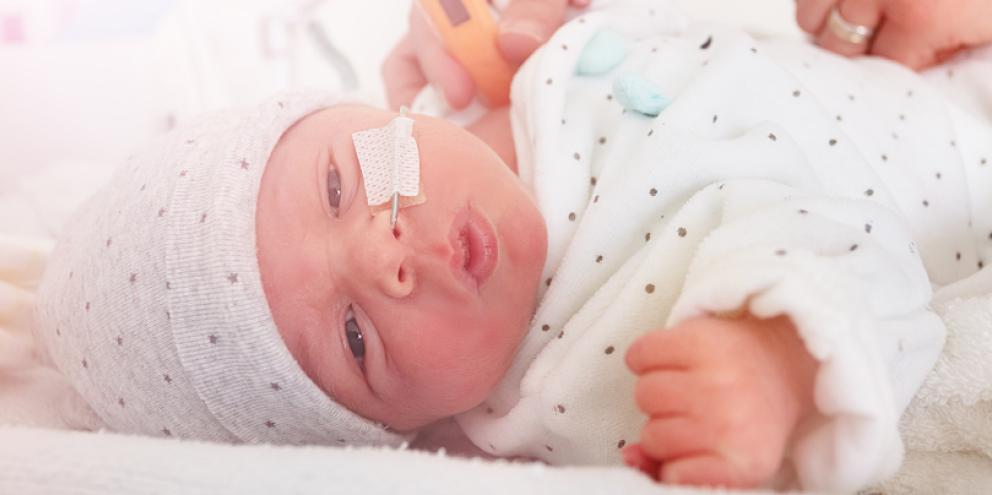
Now that you get to bring in the latest technology, you want to ensure you make the right purchasing decision. There is a lot to consider, such as built-in monitoring, lighting, scales, and more. So, here is what you should keep in mind as you approach this important decision.
Workflow Barriers
Before choosing which warmer features would be most beneficial for your unit, you should first assess any workflow barriers that could be solved by new equipment. Setbacks often vary by team but may stem from delayed access to pre-warmed supplies and inconsistencies in cardiorespiratory monitoring and interventions.
Consider both well-baby care and high acuity care including resuscitation. Where does your equipment "get in the way" today? Are there steps in your workflow that could be streamlined with updated equipment?
As an example, clear and structured protocols for the Golden Hour can improve outcomes for neonates. However, those protocols can be delayed or deterred by barriers to the workflow, such as inefficiencies in resource readiness or team coordination. Efforts to recognize those barriers have yielded success. In a Journal of Perinatology paper reviewing one center's protocol improvements, certain Golden Hour changes resulted in faster stabilization time and reductions in hypoglycemia and hypothermia.1 So, consider how your equipment can enhance your ability to remove barriers.
If your interdisciplinary resuscitation team experiences delays because they're juggling disparate monitors, radiant warmers with integrated parameters such as T-piece resuscitation, blended gasses, SpO2, and heart rate monitoring should be prioritized. While the best radiant warmer on the market can't solve all workflow problems, it can offer features and solutions that address common barriers to care.
Helpful Integrations
Comprehensive integrations built into radiant warmer beds—such as various vitals' data, for instance—put the necessary resources right at your staff's fingertips, eliminating the need to chase after disconnected tools. This saves time when every second matters. Consider the potential time saved in not having to manage additional equipment.
So, look for "all-in-one" warmers with adjustable procedure lighting, scales, electrocardiogram, X-ray trays, and oxygen blenders. With these integrated features, staff can seamlessly move through workflows without having to move infants across surfaces, manually take vitals with stethoscopes, or worry about not having a needed device available during a critical moment.
Keep future integrations in mind, too. With systems that offer seamless and safe mounting options, team members can easily add on accessories to make equipment management less cumbersome.
Safety Measures
Ensuring patient safety is of utmost importance when using any hospital equipment, which makes a high-acuity workflow critical. In particular, providers should consider systems that support that workflow from end-to-end, with a special focus on features and components that create more efficiencies during the golden hour and beyond.
Factors to explore include a single-view dashboard for the care team, as well as attachable configurations that minimize the risk of having missing or incompatible equipment during critical interventions. Additionally, integrated vitals and data including SPO2, heart rate, time, and temperature can ensure the NICU team readily has access to a single source of data to drive care decisions.
Additionally, look for integrated resuscitation equipment that helps create a complete stabilization toolkit within arm's reach. Equipment like:
- Flowmeters
- Air/O2 blenders
- Manometers
- Secondary outlets
- PIP safety values (to prevent accidental pressure increase)
- Cylinder holders (for critical transport)
Ergonomics and Flexibility
Clinician ergonomics and ease of use are paramount for radiant warmers, as struggles with back pain, overheating, and more are common among L&D and NICU teams. Consider these features for your team's comfort and convenience:
- Heat direction: Beds that allow providers to work without having to duck under a heat source can help clinicians keep cool while maintaining thermal support for infants.
- Accessory availability: Integrated solutions that offer everything within reach, including pulse oximeters, flow meters, manometers, PIP control, lighting, T-pieces, ECG, and other monitors, can help providers focus their attention where it matters.
- Adjustable height: Look for warmers with electronically controlled height to prevent the back strain that can come when taller nurses need to hunch over beds.
- Durability and useful life: Consider whether the equipment will hold up to the demands of everyday use, cleaning, and transport. Also, look for systems that offer service availability to ensure that if the equipment is down, reliable and local support will be there to help.
These features have the potential to improve access to critical values during a resuscitation and increase efficiency around the bed. Physically customizable warmers that also pack in current technology offer an all-in-one solution that can support varying workflows.
Making the Right Investment
The warmer you choose depends on the unique needs of your unit. Start by assessing the strengths of your workflows, as well as barriers to care. How can a new warmer bridge those gaps for patients and providers? Consider integrations, safety measures, and ergonomics—but other considerations may also be important based on the specific needs of your facility and patient population.
By assessing the right factors, you can ensure that your investment meets the biggest expectations for your hospital's tiniest patients.
References:
- Croop SEW, Thoyre SM, Aliaga S, et al. The Golden Hour: a quality improvement initiative for extremely premature infants in the neonatal intensive care unit. Journal of Perinatology. 2019;40(3):530-539. doi:10.1038/s41372-019-0545-0
© 2023 GE HealthCare
GE is a trademark of General Electric Company used under trademark license. Reproduction in any form is forbidden without prior written permission from GE HealthCare. Nothing in this material should be used to diagnose or treat any disease or condition. Readers must consult a healthcare professional.
JB21786XX








